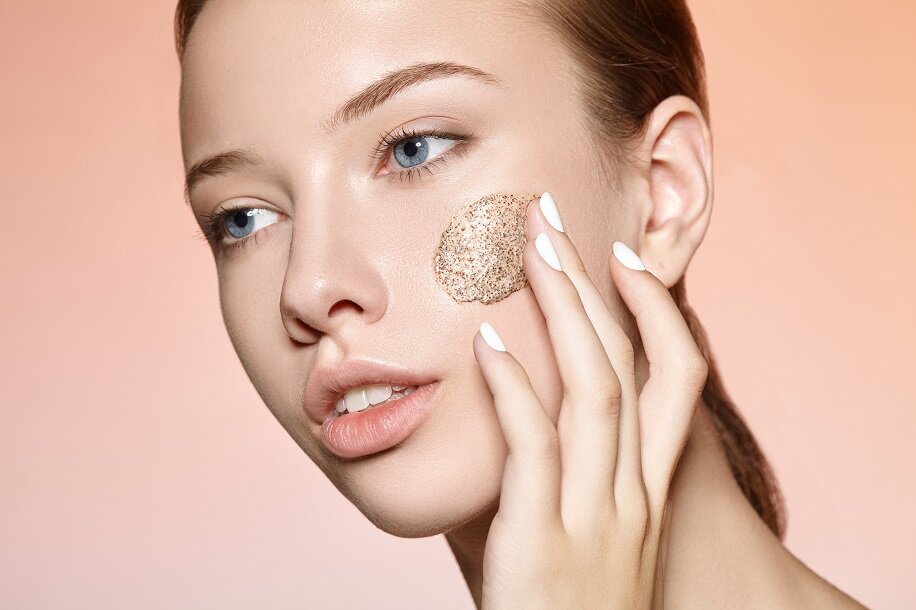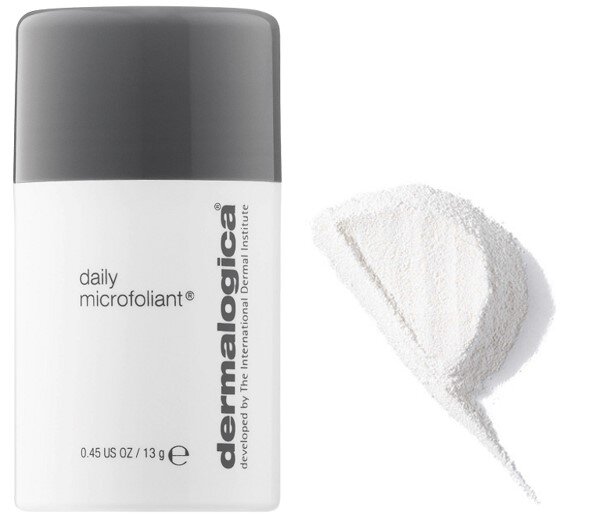Chemical vs. Physical Exfoliation: Which Is Better?
If you’ve read my articles before, you know I’m a big fan of chemical exfoliators. AHA / BHA, glycolic, and retinol are my go-to’s. After years in my youth of using St. Ives apricot scrub only to find out that I was micro-tearing my skin and causing premature aging, I went cold turkey on physical exfoliators (think old movies where the guy holds the cross up to the vampire). As I’ve gotten older, I’ve increased my exfoliation to almost daily. I either use a pad or a liquid exfoliator like retinol at night. I’ve had tremendous success with this method, but there are times when my skin is flaky. The chemicals are great at breaking the “glue” down that holds the dead skin to the lower layers, but it doesn’t always work at once. So, when you have that in-between day where your skin is a bit flaky and you need to look great or wear makeup what do you do?That’s when your physical exfoliator comes in. I know. I avoid them like the plague, but every once in awhile you need them. How often, of course, depends on your skin, but generally speaking, after a week of chemical exfoliation you’re going to need to get rid of those flakes. Realistically, you’re looking at once a week.The problem with physical exfoliators -- and the reason I usually never recommend them -- is that people don’t use them correctly. They rub too hard, they use them too frequently, and they use them all over instead of just targeting the areas with flaky skin.
As I’ve gotten older, I’ve increased my exfoliation to almost daily. I either use a pad or a liquid exfoliator like retinol at night. I’ve had tremendous success with this method, but there are times when my skin is flaky. The chemicals are great at breaking the “glue” down that holds the dead skin to the lower layers, but it doesn’t always work at once. So, when you have that in-between day where your skin is a bit flaky and you need to look great or wear makeup what do you do?That’s when your physical exfoliator comes in. I know. I avoid them like the plague, but every once in awhile you need them. How often, of course, depends on your skin, but generally speaking, after a week of chemical exfoliation you’re going to need to get rid of those flakes. Realistically, you’re looking at once a week.The problem with physical exfoliators -- and the reason I usually never recommend them -- is that people don’t use them correctly. They rub too hard, they use them too frequently, and they use them all over instead of just targeting the areas with flaky skin. My advice is to use a chemical exfoliator daily or at least four times a week. Then follow with a physical exfoliation on the areas of flaky skin only, once a week. When you select a physical exfoliator, make sure that it is one with plenty of gel or cream encompassing the scrub particles so that it will have a vehicle to roll on the skin, or one like Dermalogica's above, which is a super fine powder you mix with water to create a gentle paste. More and more manufacturers have banned microbeads as they do not disintegrate. This makes finding a gentle physical exfoliator more difficult. Make sure to ask which ones are gentle.Apply the physical exfoliator to the flaky areas on dry skin. This will permit you to use a light touch and still have the product do its job effectively. Do not press hard. It isn’t necessary. That only presses the product into the tissue and can cause capillaries to burst or small micro-tears to form. Light pressure will effectively slough the flakes away. Rinse. If a second light pass is necessary, do it again. Better to do it lightly twice, than too roughly once.
My advice is to use a chemical exfoliator daily or at least four times a week. Then follow with a physical exfoliation on the areas of flaky skin only, once a week. When you select a physical exfoliator, make sure that it is one with plenty of gel or cream encompassing the scrub particles so that it will have a vehicle to roll on the skin, or one like Dermalogica's above, which is a super fine powder you mix with water to create a gentle paste. More and more manufacturers have banned microbeads as they do not disintegrate. This makes finding a gentle physical exfoliator more difficult. Make sure to ask which ones are gentle.Apply the physical exfoliator to the flaky areas on dry skin. This will permit you to use a light touch and still have the product do its job effectively. Do not press hard. It isn’t necessary. That only presses the product into the tissue and can cause capillaries to burst or small micro-tears to form. Light pressure will effectively slough the flakes away. Rinse. If a second light pass is necessary, do it again. Better to do it lightly twice, than too roughly once.

